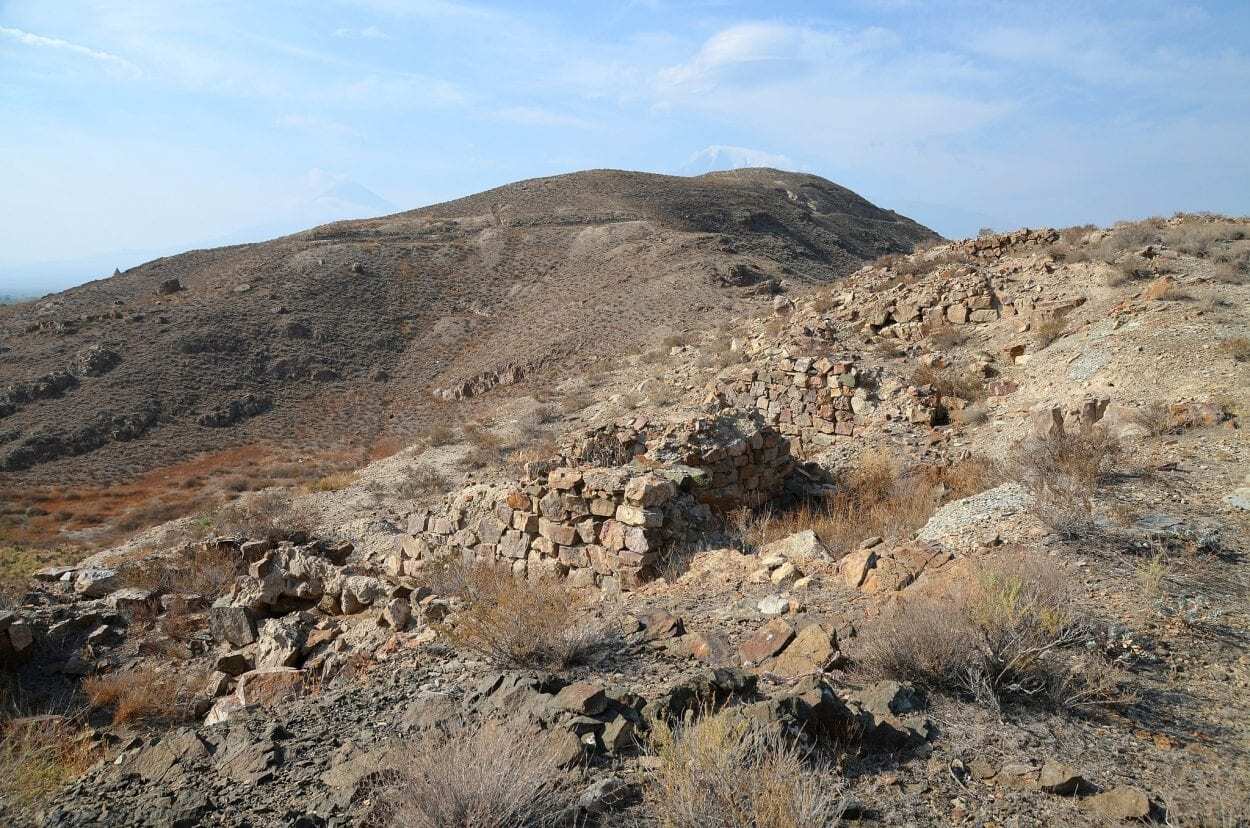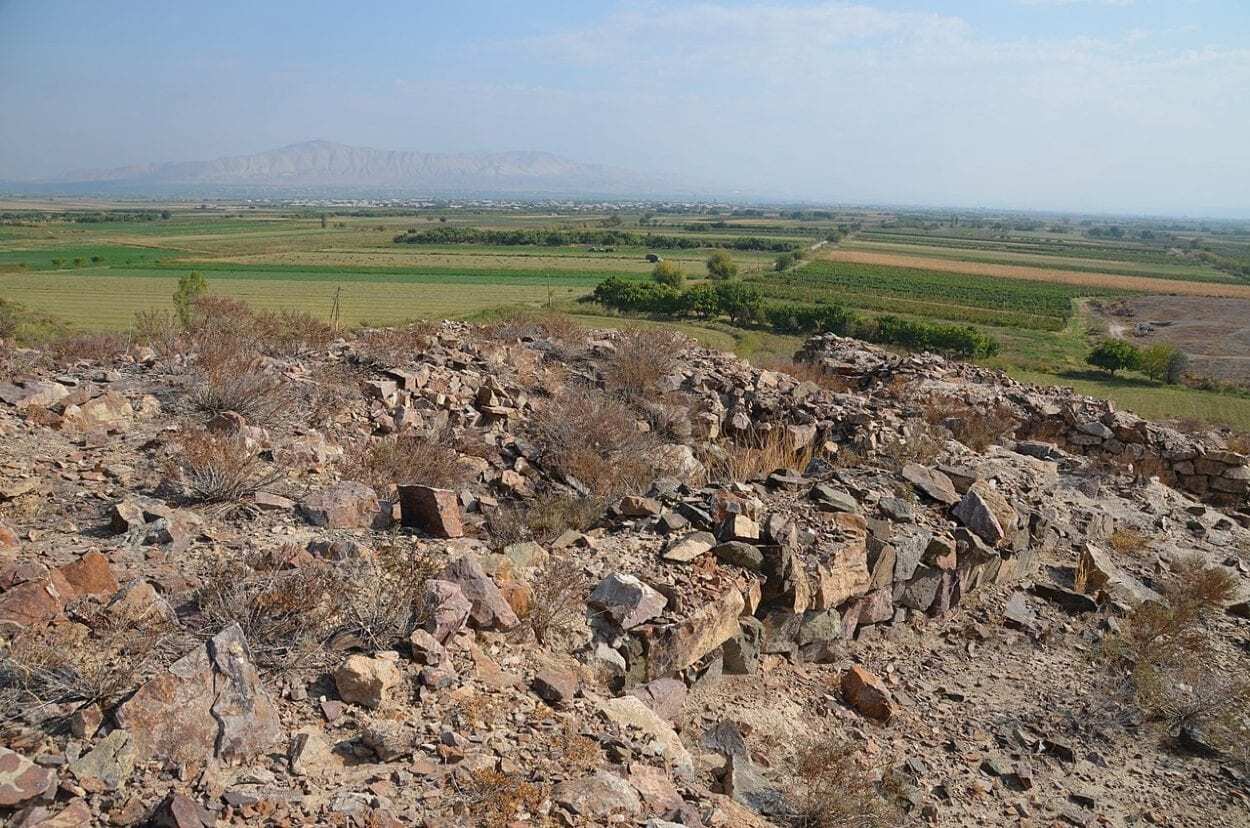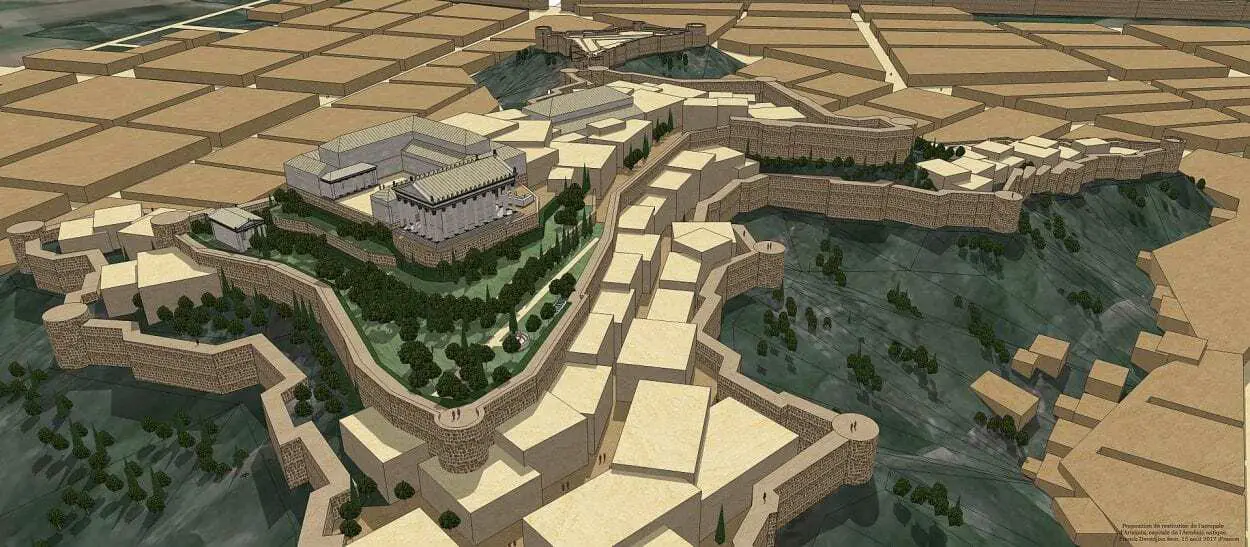Artaxata, meaning “joy of Arta” was an ancient city and capital of the Kingdom of Armenia in the Ararat Province of Armenia.
Artaxata was founded by King Artashes I of the Artaxiad dynasty in 176 BC, rising to become the capital where it was known as the “Vostan Hayots” meaning “court of the Armenians”.
The Artaxiad dynasty ruled from 189 BC, covering a territory that spanned Greater Armenia, the Kingdom of Sophene, and parts of Lesser Armenia and Mesopotamia.
According to Strabo and Plutarch (Greek historians and biographers), the city was a centre of Hellenistic culture, even being described as the “Armenian Carthage” due to a contested account that the Carthaginian general Hannibal was involved in the planning and construction of the city.

Artaxata was built on several hills next to the River Araxes, comprising of temples, public baths, a theatre, and various dwellings that were overlooked by the Acropolis – a large palace complex with administrative buildings, a treasury, and a customs house.
The Acropolis would later be renamed to Khor Virap (loosely meaning “Bottom most pit”), becoming a major site of pilgrimage due to the connection with Gregory the Illuminator (the patron saint and first official head of the Armenian Apostolic Church) being imprisoned in a pit by King Tiridates III of the Arsacid dynasty of Armenia.
During the reign of Tigranes II, the capital of the Armenian kingdom was moved from Artaxata to a new capital called Tigranocerta. The proximity of the Roman Empire led to the kingdom being invaded in 69 BC, resulting in the sacking of the new capital and Artaxata being reinstated in 60 BC.

Artaxata was captured by the Roman General Gnaeus Domitius Corbulo in AD 58 during a short-lived, Roman conquest of Armenia and was razed to the ground the following year.
Reconstruction was sponsored by Emperor Nero (with Artaxata being temporarily named Neronia), but the city would be destroyed again in AD 162 when Emperor Trajan invaded and conquered Armenia.
Artaxata remained a trade hub between the Roman and Sassanian Empires, as well as a political and cultural centre of Armenia until AD 369, when it was thoroughly destroyed by the Sassanid Persian invading army of king Shapur II.
After losing its status as a capital to Vagharshapat and later Dvin (with stone robbed from Artaxata for Dvin’s construction), Artaxata gradually lost its significance and would eventually be abandoned.
Header Image Credit : Franck devedjian – CC BY-SA 4.0





